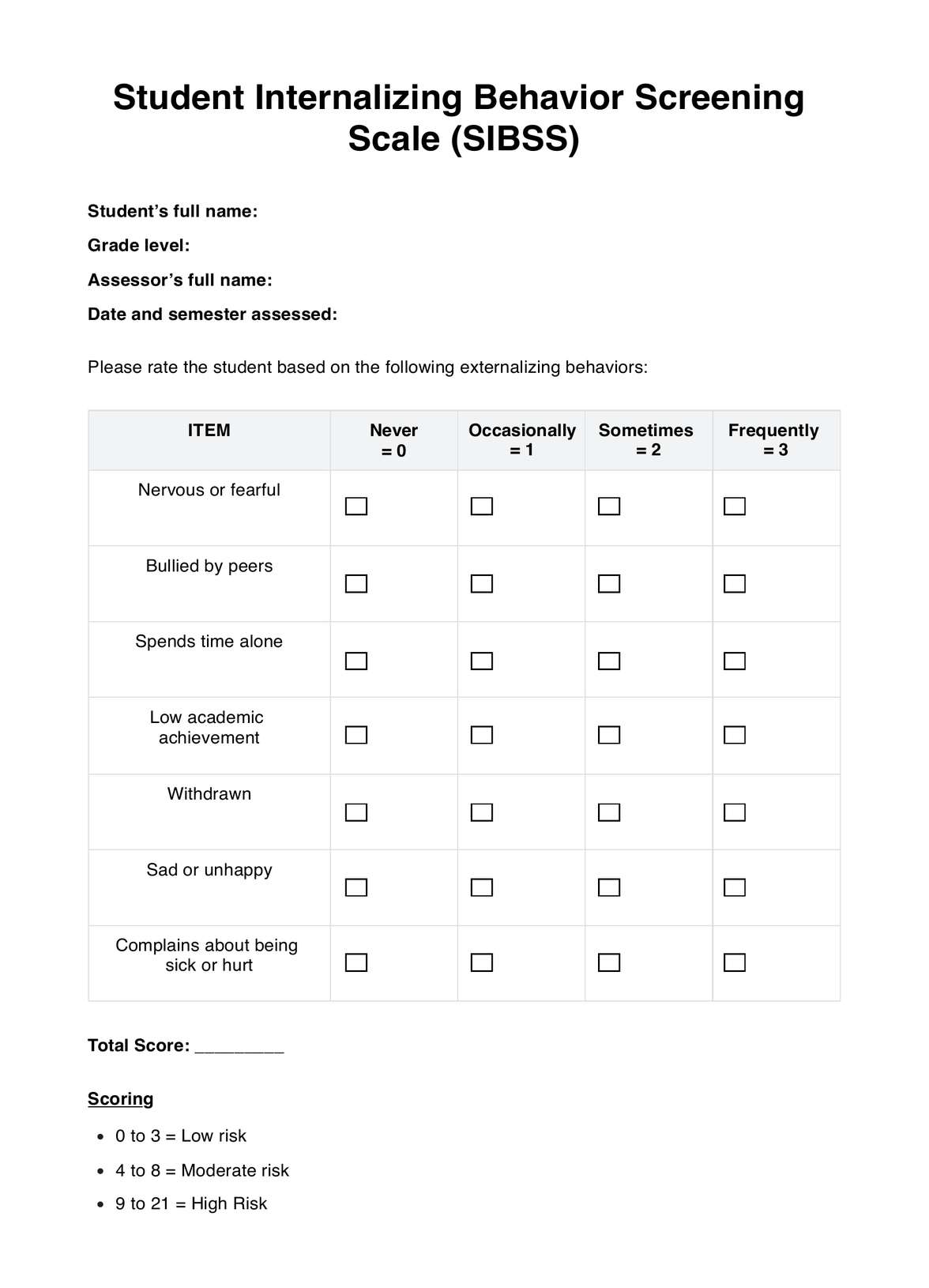An example of internalizing behaviors is when a child repeatedly engages in negative self-talk, such as "I'm not good enough" or "Nobody likes me," leading to feelings of sadness and low self-esteem. These internalized thoughts can manifest into physical symptoms, such as headaches or stomachaches. This type of behavior can indicate underlying mental health issues, such as anxiety or depression.

Student Internalizing Behavior Screening Scale (SIBSS)
Use the Student Internalizing Behavior Screening Scale (SIBSS) to gauge if certain students are at risk.
Student Internalizing Behavior Screening Scale (SIBSS) Template
Commonly asked questions
Risk factors for internalizing disorders can include genetic predisposition, environmental stressors, trauma, and family dynamics. Children who have a family history of mental health issues or who experience chronic stress and adversity in their environment may be more vulnerable to developing internalizing behaviors.
The Student Internalizing Behavior Screening Scale (SIBSS) is a tool educators and mental health professionals use to screen for internalizing behaviors in children and adolescents. It can be used as part of routine mental health assessments or when a child is exhibiting symptoms of anxiety, depression, or other internalizing disorders.
EHR and practice management software
Get started for free
*No credit card required
Free
$0/usd
Unlimited clients
Telehealth
1GB of storage
Client portal text
Automated billing and online payments











